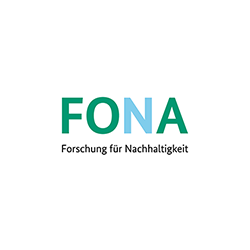Efficient operation of cooling water circuits by integrated desalination at the example of the steel industry
Background:
The aim of the project is to halve the blow down water amount of cooling circuits using the example of the steel industry and thus save up to 800,000 m³/a of water for an average steel location. This is to be achieved by reducing salt input through the needs-oriented dosing of cooling water chemicals on the one hand and by developing suitable processes for separating salt from the feed water, circulation water and desalination effluent water on the other. Due to the complex cooling water matrix and structure of the cooling circuits, this objective can only be achieved by the accompanying development of a simulation tool for the entire circulation water system.
Aims:
By improving the efficiency of water cycles, the following objectives are achieved:
- Improvement of the economic efficiency of cooled processes
- Protection of natural water sources
- Reduced dependence of steel production on water availability
Focus of the work:
The main focus of the project is:
- Development of a concept for appropriate chemical dosage based on new measuring methods for biological activity and solid concentration in cooling water.
- Desalination of cooling water: Production of prototypes and demonstration tests under operational conditions as a combination process:
- Capacitive deionization
- Reverse osmosis with newly developed membranes with anti-fouling coating,
- High pressure reverse osmosis and evaporation with structured polymer heat exchangers to minimise the amount of concentrates from the capacitive deionisation or reverse osmosis on the way to a zero-liquid discharge solution.
- Pre-treatment of the water adapted to the above mentioned desalination processes in order to achieve high operational safety
- Exemplary illustration of the cooling circuits of a steel processor by means of simulation, development of the simulation modules for the new processes and calculation of the most economical and sustainable process combinations and operating modes.
- Summary of the results in an economically evaluated plant concept in the steel sector consisting of pretreatment, 1st and 2nd desalination stage for new cooling circuits to be built or as a supplementary plant for water recycling, taking into account the needs-oriented dosing of cooling water chemicals.
- Transfer to cooling water circuits in other industries
- In Europe and in countries without a shortage of water, a market potential for the system for need-based chemical dosing is seen. Worldwide, especially in areas with water shortage, a high market potential for the developed process combination for salt removal and highly efficient water circulation is seen.
12/2019: Results and perspectives for practice



